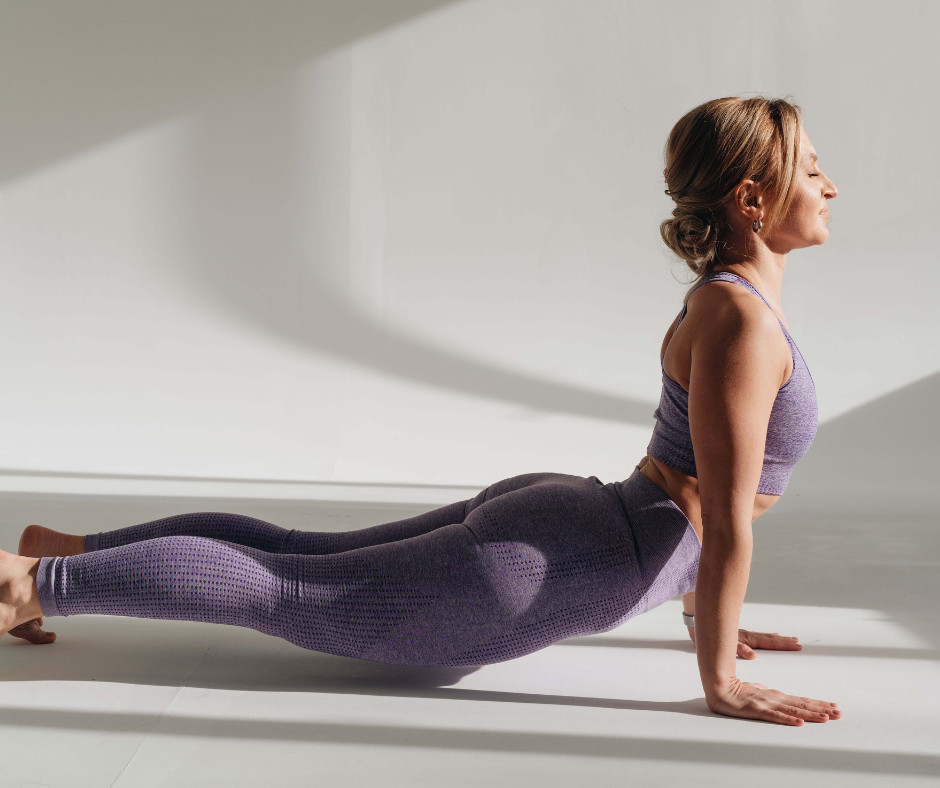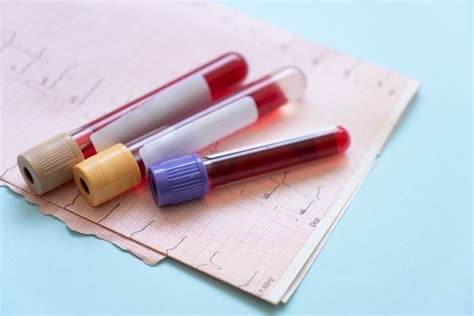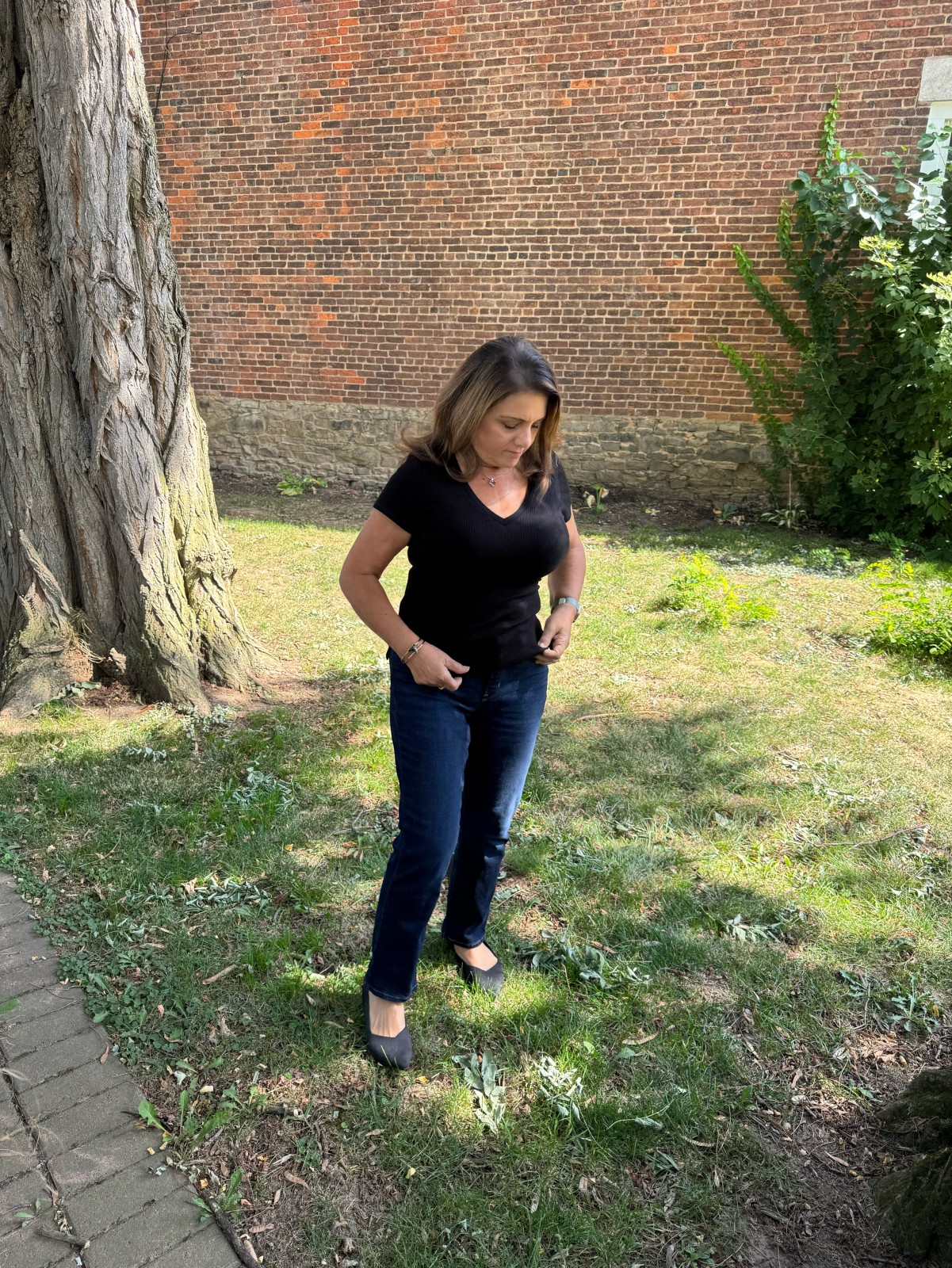
Top Five Health Reasons Women Over 40 Should Practice Yoga
Life has a funny way of bending and stretching, much like a yoga pose. As we hit the fabulous 40s, the push and pull of daily life can make the body feel like it’s no longer our faithful ally. Yet, in the midst of life’s hectic tempo, adopting a regular yoga practice can be the gentle, yet powerful, re-alignment tool our bodies desperately need.
This article strips away the skepticism and invites women over 40 into a world of possibilities that yoga offers. Here are five compelling reasons why incorporating yoga into your daily routine can help you unlock a healthier, more vital you.
1. Strength Enhancement Beyond Resistance Training
You might think of the benefits of strength training as more pronounced in younger years. However, yoga's consistent, full-body approach to isometric exercises can significantly enhance muscular strength and endurance. Unlike the weightlifting approach which isolates muscle groups, yoga asanas engage multiple muscle groups simultaneously, fostering a more balanced approach to strength.
Women over 40 often face the challenges of diminishing bone density and muscle mass, which makes activities like yoga pivotal in maintaining overall strength. A consistent yoga practice can help counteract these natural effects of aging, ensuring you stay strong to enjoy life to the fullest.
2. Alleviate Back Pain Through Mindful Movement
Back pain can be one of the most debilitating and persistent health issues women encounter as they age. Unlike the high-impact nature of some sports and exercises, yoga is low-impact, reducing the risk of injury while gently stretching and strengthening the back and core muscle groups.
Certain yoga poses, such as Cat-Cow, Downward Dog, and Child’s Pose, can provide immediate relief from back pain. Over time, these poses help alleviate chronic back issues, making it easier to maintain an active lifestyle without the constant threat of aching.
3. Mitigating Arthritis: A Balancing Act of Mobility and Stability
Arthritis can make movement painful, yet the adage 'use it or lose it' is especially true for maintaining joint health. The practice of yoga is uniquely positioned to offer both the mobility and stability required to manage arthritis effectively.
Yoga’s focus on fluid movement combined with static poses that work on balance and joint stability can improve the flexibility and function of your joints. By strengthening the muscles surrounding these joints, you create a supportive structure that reduces the impact of arthritis symptoms.
4. Yoga and Heart Health: Finding Peace for a Healthier Heart
Stress, inflammation, and compromised cardiovascular health are all too common as we age. Yoga goes beyond physical asanas, encompassing relaxation techniques and breathing exercises that have a direct, positive impact on the heart and the body's stress response.
Incorporating a regular yoga practice into your routine can help lower blood pressure, reduce oxidative stress, and lower the heart rate. As we all know, a calm heart is a happy heart, and yoga has the tools to help you achieve that.
5. The Sleeper's Stretch: Yoga for Better Sleep
Quality sleep is the cornerstone of a healthy life. Many women in their 40s and beyond struggle with insomnia and sleep disturbances due to hormonal changes, stress, or chronic pain. Yoga’s emphasis on calm breathing, winding down, and the relaxation of the body can lead to better sleep quality.
Practicing yoga before bedtime can be an excellent way to physically and mentally prepare for sleep. Poses such as Legs-Up-the-Wall or Savasana with deep breathing exercises can signal to your mind and body that it’s time to unwind and restore for a new day.
Bringing It All Together: The Call to Gentle Action
If the idea of a yoga practice has piqued your interest, now is the perfect time to start. The key is not to overthink it but to gently engage with the practice, and your body will thank you for it. Even starting with just a few minutes of yoga a day can lead to profound changes in your well-being.
I invite you to join my community of like-minded women who have found transformation through gentle, yet purposeful, changes in their routines. By practicing healthy habits together, we support each other on the path to a more vibrant and active life.
For those interested, I have a special program tailored to women over 40. This program has been designed to lose 7-15 pounds and reduce inflammation in just 11 days, tackling one of the main precursors to age-related diseases. If you're ready to make a change, click the link below to find out more about the program.
Remember, in health, as in life, the steadfast, consistent steps are the ones that carry us the farthest.
Join my Facebook group and connect with a supportive community of women on the same wellness journey.
Discover my signature program designed specifically for women like you who are ready to make a significant transformation in their health.
To ensure you're getting the best experience in your practice, I personally recommend the yoga mat that I use for all my sessions. It's durable, comfortable, and gives the perfect amount of support and grip for any pose. You can find this yoga mat here My Recommended Yoga Mat. It's been a game-changer for my practice, and I'm confident it will enhance yours too.
Disclaimer: The information in this article is for educational purposes only and should not be considered medical advice. Please consult with a healthcare professional before making any changes to your diet or lifestyle.

Life's regular stresses are no match for the restorative power of walking; it is an eloquent demonstration of the body's innate capacity for self-regulation. For women over the age of 40, recognizing walking as a tool for health can be transformative, spurring the adoption of this sustainable practice.
Walking is not merely a way to lower blood pressure in the short term—it's a holistic form of self-therapy. It embodies the idea of using the body as an instrument of healing itself. When faced with stress or worrisome blood pressure readings, consider walking as a positive step forward. This simple exercise might be all it takes to maintain cardiovascular vibrancy and a robust future.
The simple truth is that good health isn't always reliant on pharmaceutical solutions; often, it's as simple as getting on your feet and exploring the world around you. Walking encapsulates physical activity and the body's extraordinary resilience. By integrating this into your lifestyle, you seize control and begin to map out a road to wellness that is both literal and metaphorical.
Ultimately, the journey to health is about the sustained, long-term approach to well-being. Let your path resonate with the sounds of determined steps—the rhythm of a life fully embraced. May each stride you take reinforce the harmony of a strong, healthy heart and a life plentiful with vitality.
These are my favorite walking shoes, they provide support and are super comfortable! https://amzn.to/42QwKk9
Join our 'Healthy Living Beyond 40' community today, and unlock the secrets to thriving in your middle years with expert advice, supportive peers, and actionable strategies for managing blood pressure and maintaining a healthy weight. Join the group here: https://bit.ly/48uQP0Z
Oh by the way, I have a program where we lose 7-15 pounds and reduce inflammation in just 11 days. Inflammation is one of the main reasons we get age related diseases, including high blood pressure! Grab the info here: https://bit.ly/42ecgBJ
Grab my free guide " 10 minute joint health exercises" and start improving your joint health 10 minutes at a time! https://bit.ly/3ONsFHF
Disclaimer: The information in this article is for educational purposes only and should not be considered medical advice. Please consult with a healthcare professional before making any changes to your diet or lifestyle.

We've all heard the age-old saying, "Laughter is the best medicine," but there's more to it than just a feel-good factor. When it comes to our emotional wellbeing, laughter and humor can play pivotal roles in helping us heal, manage stress, and navigate the sometimes choppy waters of life with a bit more ease.
Science backs up the healing power of a good chuckle. When we laugh, our body releases endorphins, the ‘feel-good’ chemicals that naturally elevate our mood and provide a sense of euphoria. These biochemical changes also reduce the level of stress hormones in our bodies, creating a healthier mindset and a more relaxed physical state.
But what if laughing is the last thing we feel like doing? Herein lies the magic of humor as a tool for emotional healing. It doesn't require genuine mirth to reap the benefits. Even a fake smile can kickstart a positive chain reaction. Whether it's a slight giggle or a roaring belly laugh, the act itself can be a catalyst for change. This isn't to say humor should mask genuine feelings of sadness or distress, but it can act as a coping mechanism to pull us through tough times.
Social laughter—the kind we share in a group—has its unique power. It can strengthen relationships, foster a sense of belonging, and reduce feelings of isolation. When we share a laugh, the connection with those around us intensifies. We are social creatures by nature, and humor provides us with a common language that transcends differences, creating bonds and fostering inclusivity.
Not only does laughter improve our social health, but it also assists in cognitive function. It can enhance creativity, improve mental flexibility, and help with problem-solving. Jokes or situations that incite laughter often require a degree of mental acrobatics, challenging our brains to see issues from varied perspectives.
Furthermore, humor can provide a different outlook on life's adversities. It allows us to take a step back and examine our situations from a fresher, less threatening angle. Laughter provides a buffer against despair and can give us the courage to face our fears and challenges head-on, knowing that there's a respite in humor.
In therapeutic settings, laughter therapy and humor-based interventions have proven successful for patients dealing with chronic pain, illness, or mental health issues. Therapists have found that incorporating humor into sessions can build a stronger connection with clients, break down barriers, and provide a non-threatening way to explore sensitive issues.
Incorporating more laughter and humor into daily life doesn't require a radical lifestyle change. It can be as simple as watching a funny movie, reading a humorous book, engaging in playful activities, or even practicing laughter yoga. The key is to find joy in the little moments and allow humor to lighten the load, warming our hearts and healing our souls.
In conclusion, laughter offers a host of benefits for emotional healing and overall wellbeing. It's a free, accessible, and a universal tool that can help us navigate life's ups and downs with resilience and grace. So, the next time you're feeling overwhelmed, remember the transformative power of laughter, and let humor be your beacon to emotional wellness.
Join our 'Healthy Living Beyond 40' community today, and unlock the secrets to thriving in your middle years with expert advice, supportive peers, and actionable strategies for balancing hormones and maintaining a healthy weight. Join the group here: https://bit.ly/48uQP0Z
Oh by the way, I have a program where we lose 7-15 pounds and reduce inflammation in just 11 days. Inflammation is one of the main reasons we get age related diseases! Grab the info here: https://bit.ly/42ecgBJ
Disclaimer: The information in this article is for educational purposes only and should not be considered medical advice. Please consult with a healthcare professional before making any changes to your diet or lifestyle.

Chronic inflammation can be a source of significant discomfort and is a contributing factor in a number of health conditions. However, the power of a well-curated diet can be your ally against this silent adversary. Certain foods have been scientifically recognized to possess natural anti-inflammatory properties, making them ideal not just for pain relief, but also for improving your overall health.
One of the most celebrated anti-inflammatory foods is the omega-3 rich fatty fish. Salmon, mackerel, sardines, and anchovies are an excellent source of these essential fats that can help reduce the levels of inflammatory markers in the body. Including these fish in your diet a few times a week can make a substantial difference in managing inflammation.
Leafy greens like spinach, kale, and collard greens are also potent allies. They are packed with vitamins and minerals, notably vitamin E, which may help protect the body from pro-inflammatory molecules known as cytokines. Colorful berries such as blueberries, strawberries, blackberries, and raspberries contain flavonoids — powerful antioxidants that can combat inflammation and even reduce the risk of disease.
Whole grains are another important component of an anti-inflammatory diet. Whole wheat, brown rice, quinoa, and oats are high in fiber, which has been shown to reduce levels of C-reactive protein, a marker of inflammation in the blood.
Nuts, especially almonds and walnuts, are not only satisfying and nutritious but they also boast high amounts of omega-3 fatty acids and antioxidants. A handful a day can aid in reducing inflammation and provide numerous other health benefits.
Don't forget about the spices in your kitchen when combating inflammation. Turmeric, in particular, contains a strong anti-inflammatory compound called curcumin. When combined with black pepper, which contains piperine, absorption of curcumin is significantly increased, making this spice duo a powerful component of an anti-inflammatory diet.
Extra virgin olive oil is a staple in anti-inflammatory diets, particularly the Mediterranean diet. It is rich in monounsaturated fats and polyphenols, which have been connected to reduced risk of heart disease and other inflammatory diseases.
Lastly, green tea is revered for its health benefits, with one star component being the antioxidant ECGC. It can lower the production of inflammatory cytokines and the damage they can cause to the cells.
In conclusion, while these foods can aid in reducing inflammation, it is also important to avoid or limit consumption of foods that can trigger or worsen inflammation, such as refined sugars, fried foods, and processed meats. Combining a diet rich in anti-inflammatory foods with regular exercise and a healthy lifestyle is an effective strategy for managing inflammation and enhancing your overall well-being.
Join our 'Healthy Living Beyond 40' community today, and unlock the secrets to thriving in your middle years with expert advice, supportive peers, and actionable strategies for balancing hormones and maintaining a healthy weight. Join the group here: https://bit.ly/48uQP0Z
If you're looking for an easy button on what foods cause inflammation get my free guide “Anti _Inflammatory Guide - foods to avoid, foods to enjoy!”
Oh by the way, I have a program where we lose 7-15 pounds and reduce inflammation in just 11 days. Inflammation is one of the main reasons we get age related diseases! Grab the info here: https://bit.ly/42ecgBJ
Disclaimer: The information in this article is for educational purposes only and should not be considered medical advice. Please consult with a healthcare professional before making any changes to your diet or lifestyle.
How to Achieve Natural Pain Relief Without Pharmaceuticals: A Guide to Herbal Remedies and Alternati

Natural Pain Relief: Herbal Remedies That Work
In the quest for alternatives to pharmaceuticals, many turn to herbal remedies for pain relief. This guide highlights the scientific evidence supporting certain herbs' ability to reduce pain and inflammation. It’s tailored for those interested in holistic health, pain management, and herbal remedies, presenting an overview of how these botanicals can enhance well-being without traditional medication side effects.
Pain and inflammation are complex experiences often linked, with inflammation being the body’s response to injury or infection. Medicinal plants address pain through various mechanisms, such as reducing nerve sensitivity, inhibiting inflammatory pathways, and promoting healing. Chronic pain, defined as pain lasting longer than three to six months, frequently involves inflammation, making anti-inflammatory herbs potentially beneficial for long-term relief.
Key Herbs for Pain Relief:
- Turmeric: Known for its compound curcumin, turmeric is a staple in traditional Indian medicine and has shown promise in treating arthritis-related inflammation. Curcumin reduces pain and stiffness by suppressing enzymes involved in inflammation. I use Golden Turmeric, it's 24 times more bioavailable than standard turmeric extract. Your body absorbs the same amount of curcuminoids from just 300 mg of Golden Turmeric as it does from 1,926 mg of standard turmeric.
- Ginger: A relative of turmeric, ginger is renowned for its anti-inflammatory properties and has been used for centuries to alleviate pain, including migraines. It's particularly effective for gastrointestinal inflammation and muscle pain, offering relief when applied topically.
- Boswellia: Derived from the Boswellia serrata tree resin, boswellia has been shown to reduce inflammation and manage chronic inflammatory diseases by inhibiting leukotrienes, which play a significant role in the inflammatory response. I use Frankincense
- Willow Bark: Known as the original aspirin, willow bark has been used since Hippocrates' time to relieve pain and fever. Its active ingredient, salicin, acts similarly to aspirin but is often better tolerated by those with sensitive stomachs.
Incorporating these herbs into daily life requires careful consideration. Always source herbs from reputable providers, start with small doses, and consult healthcare professionals if pregnant, nursing, or managing a chronic condition. Be aware of potential interactions with medications.
Here is the link to what I use to manage my inflammation.
Get my free guide “Anti _Inflammatory Guide - foods to avoid, foods to enjoy!”
Join our vibrant community at 'Healthy Living Beyond 40' on Facebook, where we share insights, support, and strategies for thriving in health and wellness after 40. Let's navigate the journey together!
Oh by the way, we have a program where we lose 7-15 lbs and reduce pain and inflammation in just 11 days. Grab the info here!
Disclaimer: The information in this article is for educational purposes only and should not be considered medical advice. Please consult with a healthcare professional before making any changes to your diet or lifestyle.












